Creating a Safe Haven: The Foundation for Effective In-Home Care
As more individuals seek to receive healthcare services within the comfort of their own homes, ensuring that the living environment is both safe and accessible becomes paramount. Preparing your home not only facilitates smoother healthcare visits but also promotes independence, reduces the risk of injuries, and creates a supportive atmosphere for individuals receiving care and their caregivers alike. This article explores practical modifications, safety strategies, and planning considerations critical to preparing your home for safe and accessible care visits.
Comprehensive Home Safety Preparation for In-Home Healthcare Visits
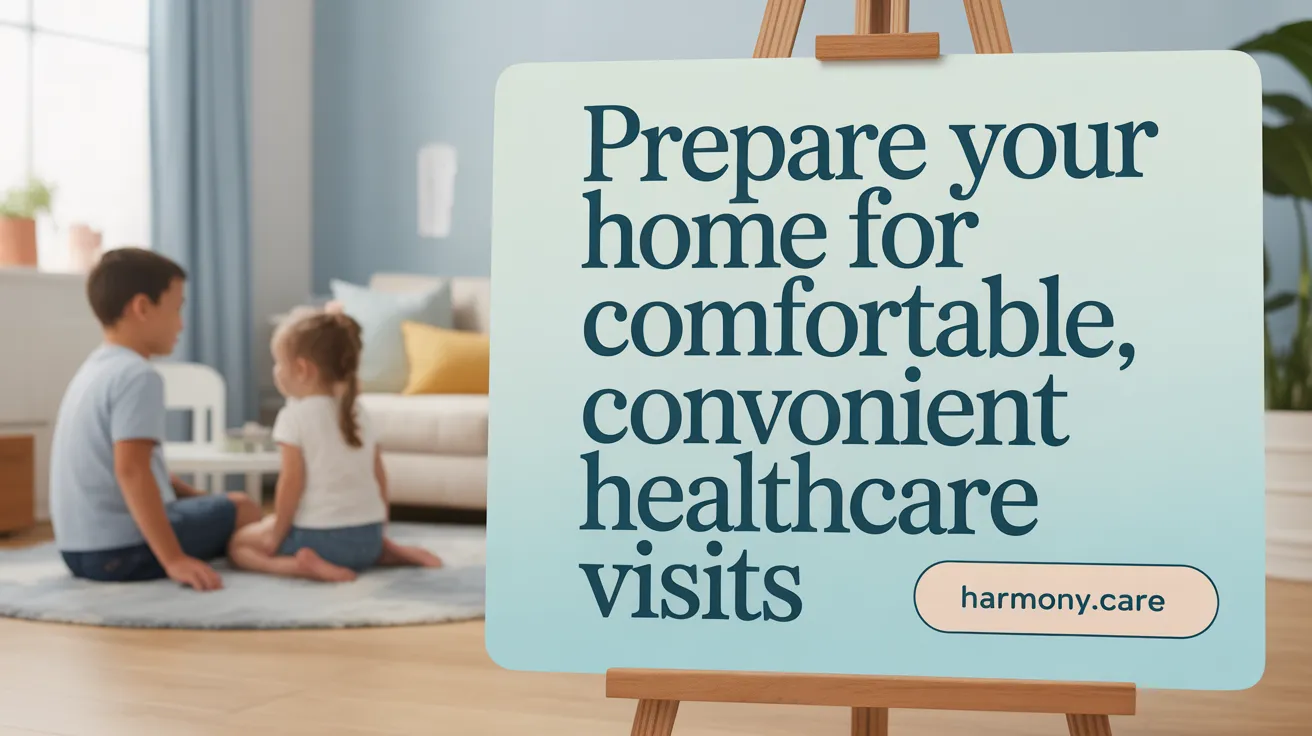
How can you prepare a home to make in-home healthcare visits safer and easier?
Preparing your home effectively can significantly enhance safety and comfort during healthcare visits. Begin by eliminating obstacles such as clutter, loose rugs, and tripping hazards to ensure clear, unobstructed walkways, driveways, and entry points. Installing ramps at the entrance, along with sturdy handrails and non-slip mats, further supports safe mobility and fall prevention.
Brighter, well-placed lighting is essential. Use bright, motion-sensitive, and task lighting in key areas like bathrooms and kitchens to improve visibility. Adding grab bars near toilets, in showers, and along stairs increases support, making movement safer for care recipients.
Organizing medical supplies is also crucial. Keep medications with clear dosage instructions, emergency contacts, and doctor information in accessible, visible spots such as the refrigerator or by the phone. Labeling these items helps in quick retrieval. For added safety, secure valuables and set house rules to accommodate care needs.
Creating a welcoming environment involves adjusting furniture for safety and comfort, and establishing routines that reassure the care recipient. Discuss expectations with healthcare aides and consider formal service agreements if needed. Mental and emotional readiness, including accepting caregivers and sharing pertinent personal health details, facilitates smoother interactions.
These comprehensive home modifications and organization efforts make healthcare visits more efficient and less stressful, ensuring safety and dignity for individuals receiving care.
Addressing Physical, Spatial, and Interpersonal Safety in Home Care Settings
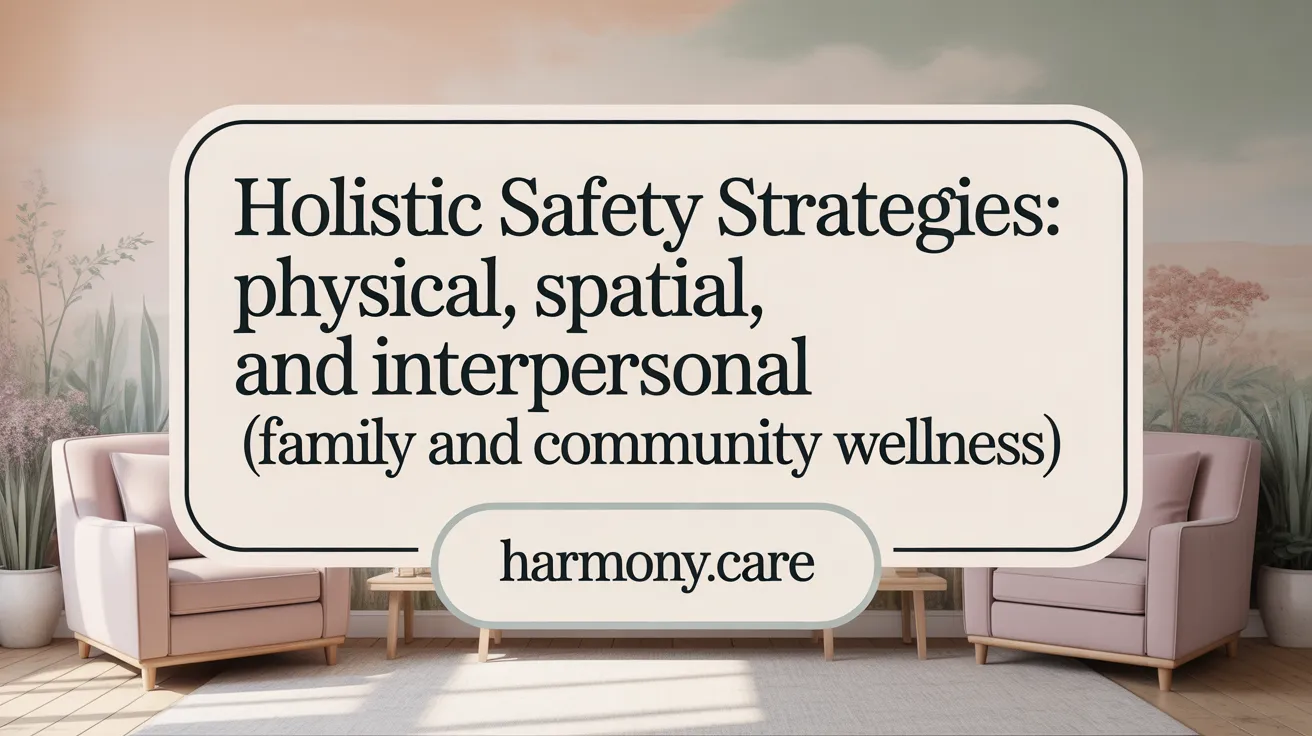
What are the three types of safety concerns during in-home visits?
During in-home healthcare visits, safety concerns can be broadly categorized into three types: physical, spatial, and interpersonal.
Physical safety refers to risks that can cause injury or health issues, such as falls, infections, medication errors, or burns. Ensuring physical safety involves making home modifications like installing grab bars, non-slip mats, and sufficient lighting, as well as proper management of medical supplies.
Spatial safety concerns focus on the home environment itself. This includes hazards like clutter, loose rugs, uneven flooring, or poor lighting that could lead to trips or falls. Keeping spaces clear, organized, and well-lit is crucial for preventing accidents.
Interpersonal safety involves the dynamics between family members, caregivers, and the care recipient. This encompasses emotional well-being, communication, and managing family or caregiver conflicts. Proper training for caregivers and open communication help maintain a safe and respectful environment.
All three safety concerns are interconnected. For example, a cluttered home (spatial safety) can increase fall risk (physical safety) and contribute to stress or misunderstandings (interpersonal safety). Recognizing these links helps in creating holistic safety strategies.
Strategies to mitigate risks
To address these safety concerns effectively:
- Conduct thorough home safety assessments to identify hazards.
- Install safety features like handrails, grab bars, and add non-slip surfaces.
- Maintain a clutter-free environment with proper lighting.
- Train caregivers on infection control and medication safety.
- Foster open communication among family members and caregivers.
- Seek financial assistance or community resources for home modifications.
Implementing these strategies helps reduce injury risks and promotes a secure, comfortable environment for both the care recipient and caregivers.
Implementing Practical Home Modifications to Support Aging in Place and Accessibility
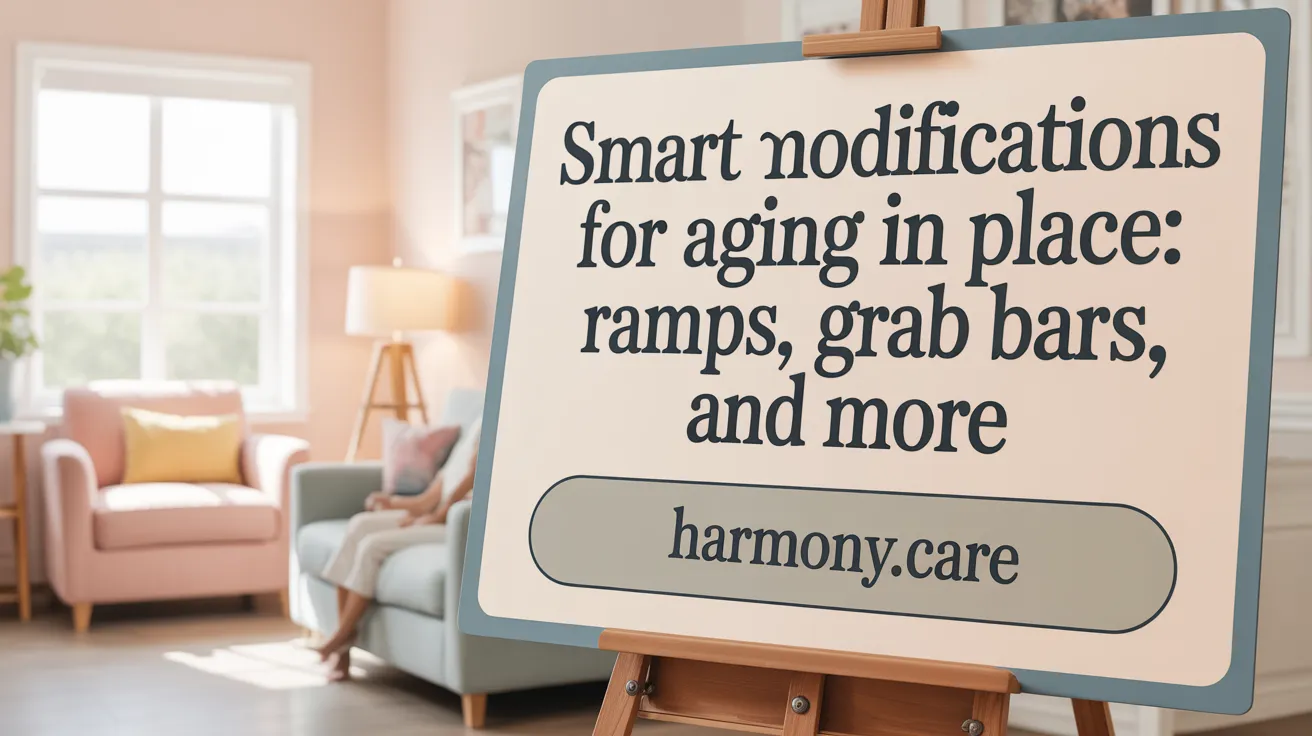
What home modifications can make a living space safer for elderly individuals?
Creating a safe and accessible living environment is essential for aging in place. Key modifications include installing ramps at entryways with sturdy handrails to facilitate wheelchair access and prevent falls. Securing or removing loose carpets and rugs reduces slipping hazards. Improving lighting throughout the home—especially near stairs and in hallways—helps enhance visibility.
Bathrooms should be equipped with grab bars near the toilet and in showers or tubs. Adding non-slip mats or strips in wet areas minimizes the chance of slips. Widening doorways can improve mobility for those using wheelchairs or walkers, making it easier to navigate the home. Regular safety assessments to identify and address hazards such as poor lighting, clutter, or unstable fixtures are vital.
Overall, these modifications aim to reduce fall risks, support mobility, and foster independence for seniors living at home.
Installation of ramps and grab bars
Ramps are essential for overcoming steps and thresholds, providing wheelchair-friendly access to all home levels. They should have slip-resistant surfaces and sturdy side rails.
Grab bars, securely mounted on walls with reinforced supports, provide vital support in bathrooms and along staircases. They help prevent falls during transfers and provide stability while standing or sitting.
Securing rugs and improving lighting
Throw rugs should be secured with non-slip mats or adhesive strips to prevent shifting. Adequate lighting, including night lights, helps residents see clearly, reducing trips and falls, especially during nighttime.
Motion-activated lights are a good investment for hallways and bathrooms, ensuring spaces are always well-lit when needed.
Widening doorways and use of mobility aids
Widening doorways facilitates movement for wheelchairs or walkers. Installing or upgrading to mobility aids like scooters and stairlifts can significantly enhance independence.
Bathroom safety measures such as non-slip mats and shower seats
Non-slip mats or textured stickers on shower floors reduce slipping hazards. Shower seats or benches allow for comfortable and safe bathing, especially for those with balance issues.
Benefits of aging in place with home modifications
Remaining at home allows older adults to preserve their independence and remain connected to their community and loved ones. It can improve emotional well-being by maintaining familiar routines and surroundings.
Cost-wise, aging in place often proves more affordable than long-term care facility options, especially when investments are made in safety upgrades. These modifications reduce the risk of falls and injuries, leading to fewer hospital visits and greater overall safety.
| Modifications | Benefits | Considerations |
|---|---|---|
| Ramps and handrails | Facilitate wheelchair access, prevent falls | Need proper surface, secure installation |
| Secure rugs and better lighting | Reduce slips, improve visibility | Use non-slip mats, install bright bulbs |
| Widened doorways and aids | Enhance mobility and ease of access | May require professional remodeling |
| Bathroom safety features | Prevent falls in high-risk location | Install grab bars, nonslip mats |
Planning ahead and investing in these modifications can greatly enhance safety, independence, and comfort for seniors. Regular evaluations ensure that the home continues to meet evolving needs, creating a supportive environment for aging in place.
Safe and Supportive Home Environments for Vulnerable Populations
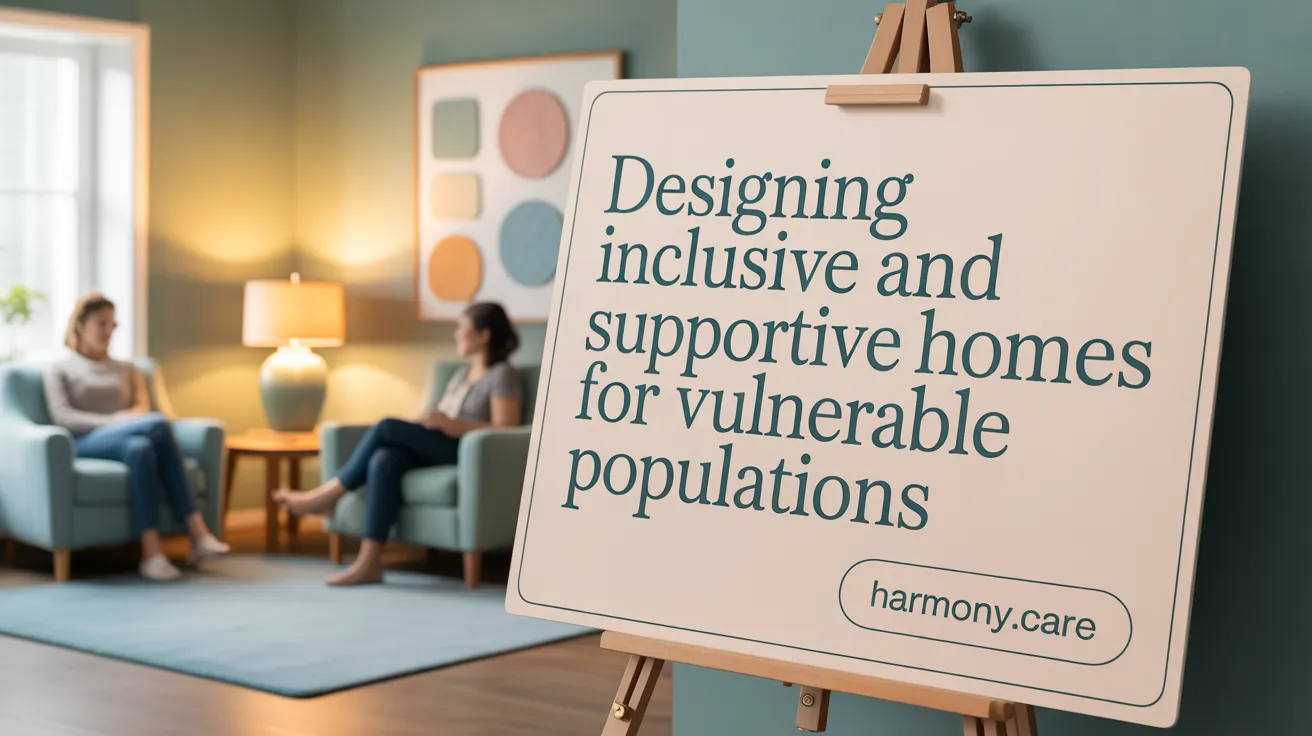
What safety considerations should caregivers keep in mind when planning home environments for vulnerable populations such as individuals with dementia or mobility challenges?
Creating a safe living space for individuals with dementia or mobility issues involves multiple important strategies. Caregivers should start by removing potential hazards such as loose rugs, clutter, and uneven flooring that could cause trips and falls.
Installing grab bars near toilets, in bathtubs, and along stairways offers essential support. Proper lighting—bright, with easy-to-operate switches—can drastically improve visibility, reducing the risk of accidents. Non-slip mats and textured strips on stairs or in the shower enhance safety further.
For those with cognitive impairments, environmental cues like contrasting colors, clear signage, and simple layouts help support orientation and reduce confusion. Securing hazardous materials such as cleaning supplies, medicines, and sharp tools by locking cabinets is vital to prevent accidental ingestion or injuries.
Outdoor safety should not be overlooked. Ramps or level entryways facilitate easy access for wheelchairs or walkers, while maintaining unobstructed pathways free of debris is critical.
Including assistive devices like alert systems, motion sensors, and emergency response keypads can help maintain independence while ensuring safety. Regular safety evaluations and involving the individual in the planning process help tailor modifications that respect personal comfort and familiarity.
Balancing security with the comfort of home life requires careful planning. For example, high-contrast colors on stairs and handrails make navigation easier, and simplified, clutter-free environments support both safety and emotional well-being.
Overall, focusing on these safety features—along with ongoing assessments—can significantly improve quality of life for vulnerable residents, supporting independence while reducing risks in daily routines.
Conducting Safety Assessments and Utilizing Resources for Optimal Home Care
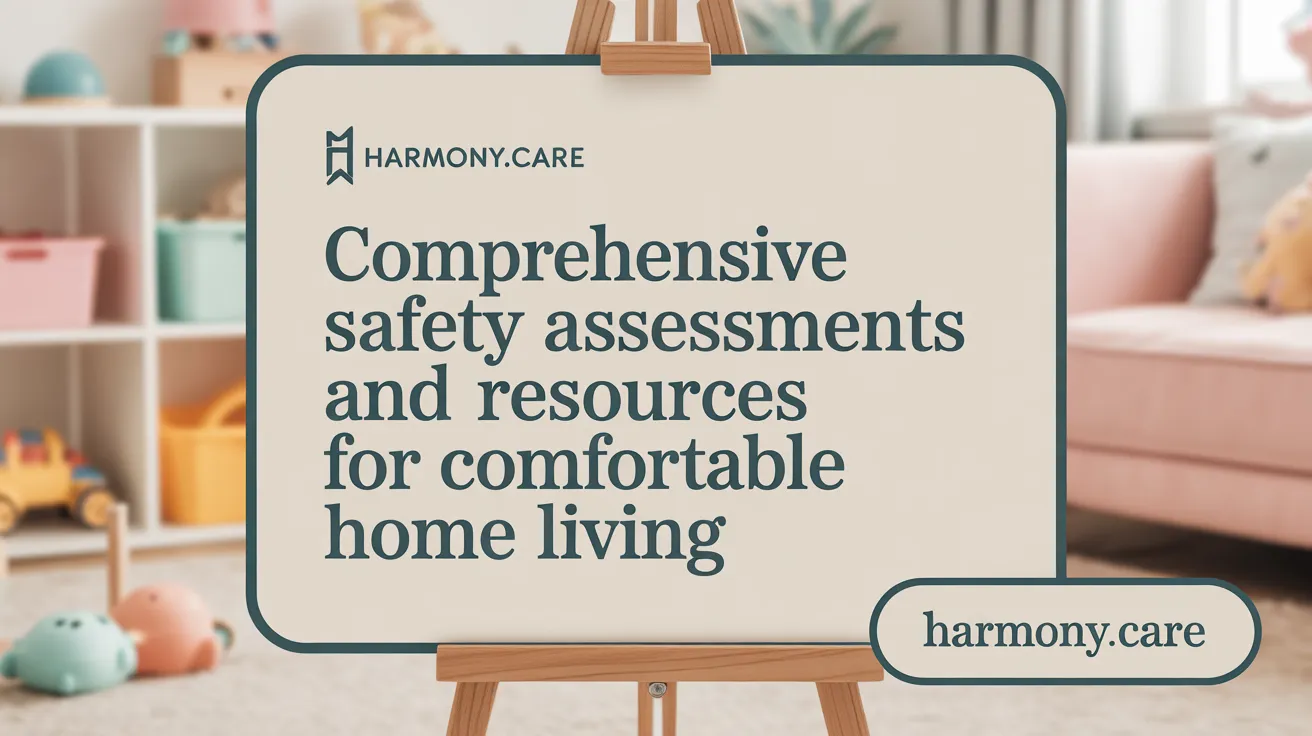
What is an aging in place checklist and how does it assist in home safety?
An aging in place checklist is a detailed tool that helps seniors and caregivers evaluate the safety and accessibility of a home environment. It highlights potential hazards like loose rugs, inadequate lighting, clutter, and narrow doorways. The checklist guides users through identifying areas needing modification and recommends improvements such as installing grab bars, non-slip mats, or ramps.
This tool also includes suggestions for home adjustments, such as widening doorways, adding stairlifts, or altering bathrooms to be more accessible. Additionally, it emphasizes planning for ongoing support by assessing health needs, emergency preparedness, and incorporating smart technologies like fall detectors and voice-activated devices.
By following this assessment, families can create a safer, more comfortable space that promotes independence and minimizes fall risks. It also helps prioritize improvements based on individual health conditions and mobility levels, ensuring the environment evolves with changing needs.
Room-by-room safety evaluations
A comprehensive safety assessment should include inspecting each room for hazards. In bedrooms, ensure furniture is stable and beds are at appropriate height for easy standing. Bathrooms benefit from grab bars, non-slip mats, and shower chairs. Kitchen safety involves securing chemicals, keeping items within reach, and ensuring good lighting.
Living areas should be free of clutter and equipped with sufficient lighting and easy-to-use switches. Hallways and staircases require sturdy handrails and proper illumination. Outside paths must be clear, well-lit, and equipped with slip-resistant surfaces.
Performing these evaluations regularly ensures that potential risks are addressed promptly, adapting to the individual’s evolving needs.
Periodic reassessment as needs change
Aging is dynamic, making it essential to review safety measures periodically. Changes in health, mobility, or living circumstances may necessitate new modifications like installing additional support bars, ramps, or adjusting furniture arrangements.
Regular reassessments—either annually or after significant health changes—help maintain a safe environment that remains compatible with current abilities. Engaging healthcare providers and home modification specialists during these reviews can lead to tailored interventions.
Financial and community resources for home modifications
Financial assistance is available through government programs, nonprofit organizations, and insurance plans. For example, agencies like the Administration on Community Living facilitate access to grants and subsidies for safety modifications.
Community resources include local senior centers, home health services, and volunteer programs offering safety evaluations and assistance with modifications. Many regions also provide low-cost or free modifications, including ramps and grab bars.
Exploring these options early can help families plan for necessary improvements without financial strain.
Integration of technology such as smart home devices and fall detection
Modern smart home technologies contribute significantly to safety. Devices like motion-activated lighting, voice-controlled assistants, and emergency alert systems enhance independence. Fall detection gadgets can automatically notify caregivers or emergency services if a fall occurs.
Video monitoring systems and door sensors can help keep track of residents’ movements, especially for individuals with cognitive impairments. These tools empower seniors to live more confidently while providing peace of mind for families.
Coordination with healthcare providers and caregivers
Effective home safety management involves collaboration. Healthcare professionals can assess medical needs and recommend appropriate equipment or modifications. Caregivers—professional or family members—should be involved in regular safety reviews and training.
Clear communication ensures that safety measures align with health conditions and care routines. Scheduling periodic check-ins and safety audits helps keep the environment current and effective.
More info: For comprehensive guidance, search using phrases like "Aging in place safety assessments and resources" to find local programs, expert advice, and detailed checklists that support safe, independent living.
Empowering Safe, Comfortable, and Accessible In-Home Care Environments
Preparing your home for safe and accessible care visits involves thoughtful environmental modifications, proactive safety assessments, and collaborative planning with caregivers and healthcare professionals. By implementing practical measures—such as removing hazards, enhancing lighting, installing mobility aids, and tailoring spaces to the unique needs of vulnerable individuals—you not only reduce risks of falls and injuries but also promote independence and emotional well-being. Leveraging checklists, community resources, and assistive technologies further strengthens the home’s safety and accessibility. With these strategies, families can create a welcoming, secure environment that supports high-quality home care and enables individuals to age comfortably and confidently in the place they call home.
References
- A Better Blueprint: Preparing Your Home for Care
- Preparing Your Home for Health Care Services: A Checklist
- Creating a Safe and Accessible Home Environment for Seniors
- Aging in Place: Growing Older at Home
- 12. Home Visit Guide | Hospital Handbook
- Making the Home Environment Safe | Johns Hopkins Medicine
- Making Home Visits Easier For Everyone: 5 Ways To Prepare Your ...
- Home Safety Tips for Caregivers to Protect Older Adults - AARP
- Preparing Your Home for Senior Care: A Safety Checklist
